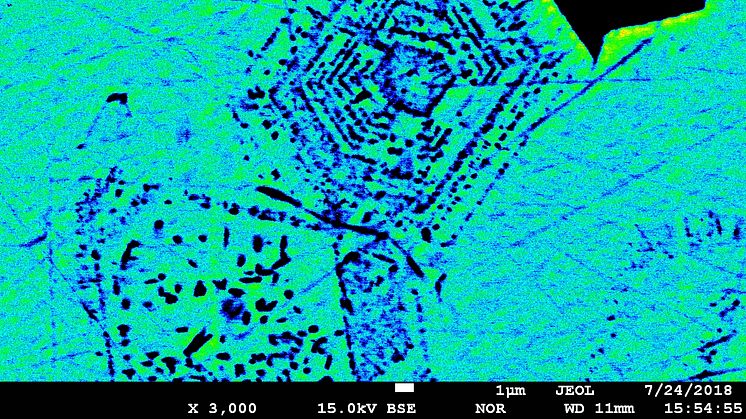
Press release -
New research supports volcanic origin of Kiruna-type iron ores
The origin of giant apatite-iron oxide ores of the so-called ‘Kiruna-type’ has been the topic of a long standing debate that has lasted for over 100 years. In a new article, published in Nature Communications, a team of scientists presents new and unambiguous data in favour of a magmatic origin for these important iron ores. The study was led by researchers from Uppsala University in Sweden.
Despite globally increasing demand for rare metals, iron is the overall most important metal for modern industry. Over 90 % of Europe´s total iron production comes from apatite-iron oxide ores, also referred to as Kiruna-type ores, named after the extremely large and iconic Kiruna iron ore deposit in northern Sweden. Today the Swedish deposits at Kiruna and Malmberget are the largest and most important iron producers in Europe, and Kiruna-type deposits represent an iron source of global importance. These deposits also have a large future potential for production of sought-after and critical rare earth elements (REE) as well as phosphorous, another element deemed critical for Europe’s future development.
The origin and actual process of formation of Kiruna-type ores has remained highly controversial for over 100 years, with suggestions ranging from a purely low-temperature hydrothermal origin to sea floor precipitation to a high-temperature volcanic origin from magma or high-temperature magmatic fluids. To remedy this problem, a team of scientists from Uppsala University, the Geological Survey of Sweden, the Geological Survey of Iran, the Indian Institute of Technology in Bombay, and the Universities of Cardiff and Cape Town, led by Uppsala researcher Prof. Valentin Troll, employed Fe and O isotopes, the main elements in magnetite (Fe3O4), from Sweden, Chile and Iran to chemically fingerprint the processes that led to formation of these ores.
By comparing their data from Kiruna-type iron ores with an extensive set of magnetite samples from volcanic rocks as well as from known low-temperature hydrothermal iron ore deposits, the researchers were able to show that more than 80 % of their magnetite samples from Kiruna-type apatite-iron oxide ores were formed by high-temperature magmatic processes in what must represent volcanic to shallow sub-volcanic settings. The new results constitute an important advance in our understanding of Kiruna-type ores and will be of help for the interpretation of, and future exploration for, apatite-iron oxide deposits worldwide.
For further information please contact Professor Valentin R. Troll, email: valentin.troll@geo.uu.se , Tel.: +46184712570
Troll, V. R., Weis, F., Jonsson, E., Andersson, U. B., Majidi, S. A., Högdahl, K., Harris, C., Millet, M.-A., Chinnasamy, S. S., Koijman, E. & Nilsson, K. P. 2019: Global Fe-O isotope correlation reveals magmatic origin of ”Kiruna-type” apatite-iron oxide ores. Nature Communications, DOI: 10.1038/s41467-019-09244-4.
The study has been supported by the Geological Survey of Sweden (SGU), the Swedish Science Foundation (VR), and LKAB AB.
Topics
Uppsala University -- quality, knowledge, and creativity since 1477
World-class research and outstanding education of global benefit to society, business, and culture.
Uppsala University is one of northern Europe's highest ranked academic institutions. www.uu.se
